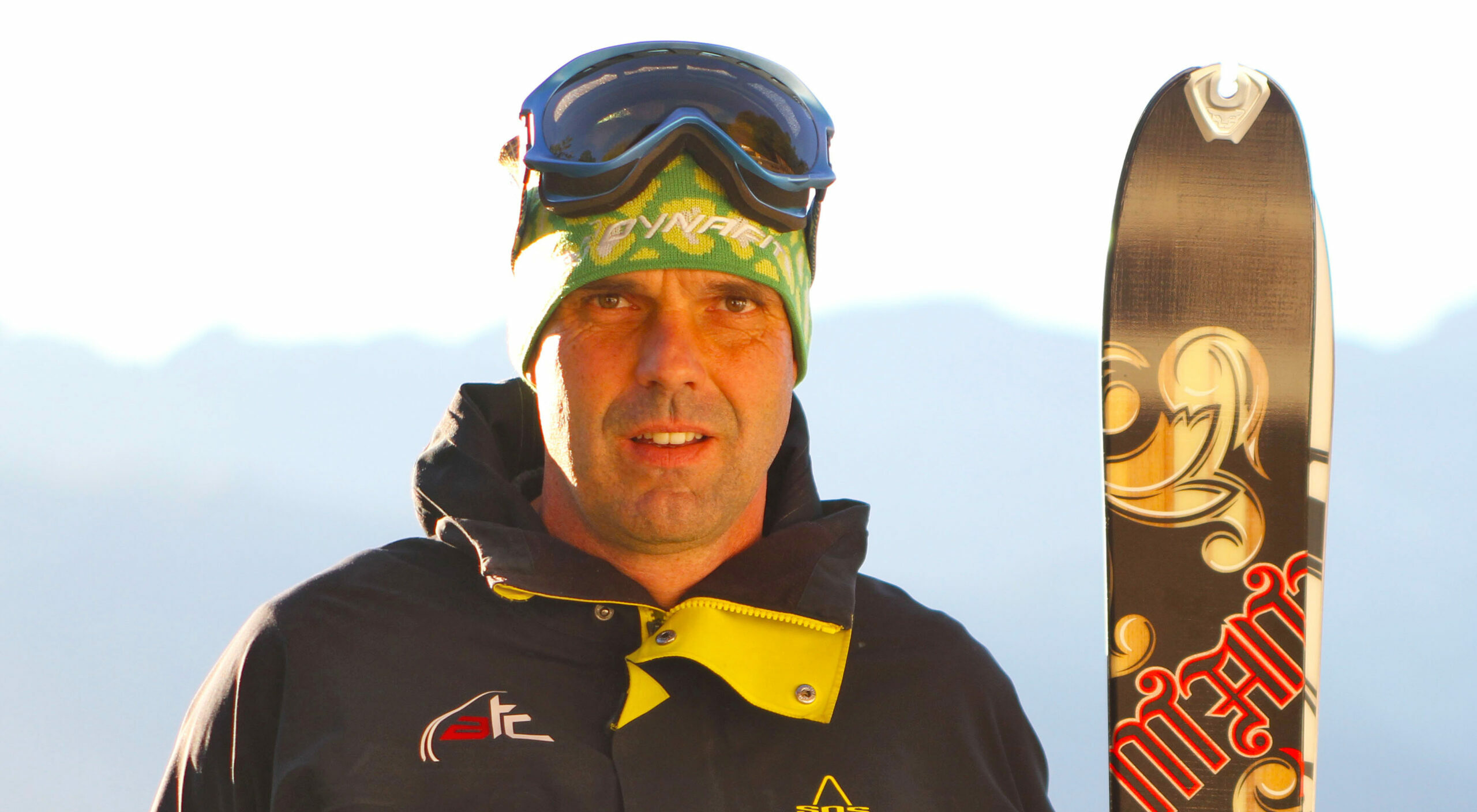Celebrating 30 years of Fall Line


It is hard to imagine a time before Fall Line Skiing magazine. But there was one. It was merely just a twinkle in its maker’s eye until one fateful day in 1991, when Tim Barnett had an idea.
“I was 26, living in Chamonix, where I’d been working as a professional ski photographer for six years,” says Tim. “My models and I we were disappointed with how our pictures we were being used in publications at the time. So, one afternoon, sat around my kitchen table, we decided we’d produce our own. We went out, bought a black and white Mac classic, and two weeks later the first issue was out.”
It was printed in the UK – Tim downloaded the layout and original slides on a floppy disk, drove it over to Buxton printers (a company that continued to print the magazine for decades). Magazines printed, it was now time to sell them.
“I literally just drove them around the UK, to ski shops, slopes and shows, selling them from the boot of my car,” says Tim. “The word ‘fall line’ wasn’t used very much back then, so a lot of people were like, “what the hell does that mean?!”. We weren’t trying to be another Daily Mail-type ski magazine, we were trying to make a statement, be different. For me, the name said it all – in Chamonix, it’s all about fall-line skiing.”
The following February at the ISPO trade show in Munich, Tim met Gordon Way, who was working as a UK Rossignol distributer and had been the publisher of a successful windsurf magazine. “He suggested we team up and go monthly with WHSmith as the distributor,” explains Tim. “So we did.”
“We weren’t trying to be another Daily Mail-type ski magazine, we were trying to make a statement, be different.”
Tim barnett – founder of fall-line
“For me it was a complete no brainer to get involved,” says Gordon. “I loved what Tim had done with the first issue – presenting the sport of skiing along the same lines as a superyacht magazine was what it was all about – selling the dream in a magazine that every skier, and non skier alike, could relate to and would be proud to have on their coffee table.”
Due to a lack of budget, Tim was writing most of the articles himself, under a pseudonym, and also using most of his own photos. “Tim was one of the best ski photographers around – if not THE best,” says Gordon, “and the way we wanted to present his photography and the sport was clear.”
Though Tim admits that if he did have a budget he’d use pictures from photographers he rated at the time, like Marko Shapiro. “But that wasn’t often,” he explains. “So I was working non-stop. Though I still managed to ski every day. I had a policy…” says Tim. “After all, the catch line for the magazine was: ‘a magazine for skiers by skiers’…”.
Fall Line Skiing was the first pan-European sports magazine. It was published in French and German, and became catalysts to the French and German freeski magazines that are around today. Tim also organised the first freeride competition in Europe in 1993, under the Fall-Line banner, on the l’Hôtel face at Brevent in Chamonix – the same slope that has been used for the Chamonix stage of the Freeride World Tour over the years. The prize was a ticket to Valdez, Alaska.
“That was one of my best moments when producing Fall Line Skiing magazine. Another memorable time was when we made this topographic map, skiing some of the off-piste classics in Val d’Isère, ones I’d only ever heard of before. The weather wasn’t perfect, or the conditions, but it was brilliant fun. Had I’ve carried on at Fall Line, I would have happily created those topos – searching out new lines – every month, for every winter, forever!”
So what was it that made Tim decide to walk away from Fall Line Skiing magazine a few years later? “I wasn’t making any money! I believed in the idea, and the magazine, but I just didn’t have the right partners at the time to make it work for me.
So I made the choice to walk away. I’m thrilled Fall Line Skiing magazine is still going strong, and its ethos lives on 30 years later”.